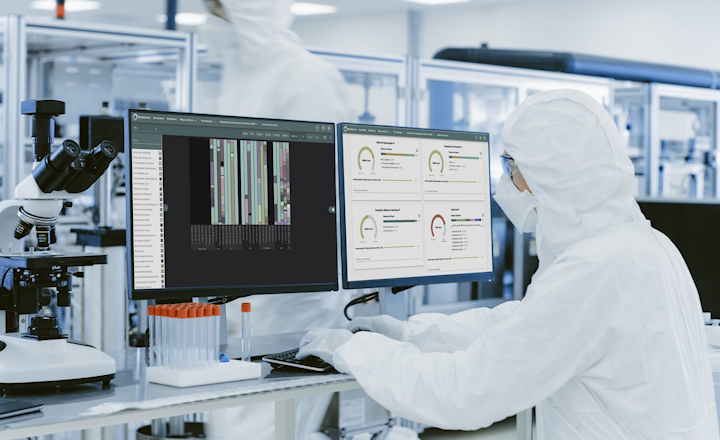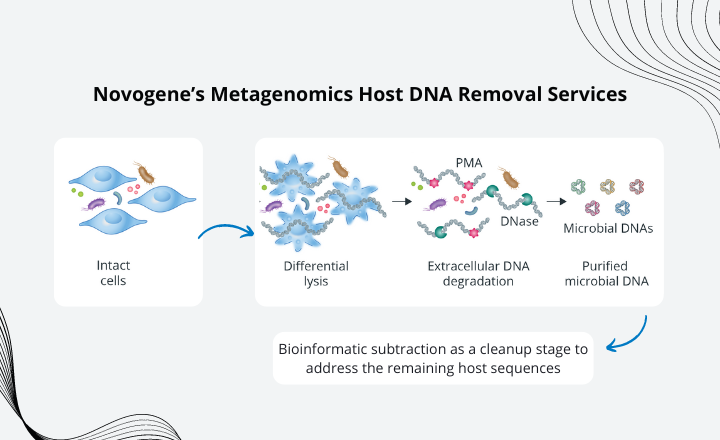DNA detection for microorganisms is evolving rapidly with new technological developments. Quantitative PCR (qPCR) for single bacteria, or mold analysis and DNA sequencing for pure culture isolates, are not enough now. The emergence of next generation sequencing (NGS) using state of art semiconductor technology has provided the tools for genome analysis of a pure isolate and microbial community analysis in a sample. The Ion Torrent Personal Genome Machine (PGM) has become one of the favorite genomic analysis tools in environmental microbiology. The outbreak bug- E.coli O104:H4 in Germany caused over 3,000 infections and more than 46 deaths in 2011. The outbreak strain was rapidly characterized at the genome level using the Ion Torrent PGM and the findings allowed for the development of rapid detection and source tracking for the outbreak strain. Metagenomic analysis for the composition of the microbial community in environmental samples has shown great potential in bioremediation management and environmental monitoring for environmental pollution sites.
What is metagenomics?
Metagenomics is the genomic analysis of a population of microorganisms. Traditional metagenomic analysis uses DNA extracted from a sample. The DNA is cloned into a plasmid and transformed into E.coli. Then a number of individual colonies from bacteria culture plates are analyzed using DNA sequencing. After a search of genebanks, the microorganisms in the sample are revealed. This approach is very time consuming, and only suitable for research projects. With the newly developed NGS, the cloning procedures have been omitted. The genomic DNA from a sample can be processed by fragmentation for whole genome analysis or by PCR with 16S rRNA gene for targeted analysis. The processed DNA can be directly sequenced using NGS technology. With 16S rRNA targeted metagenomic analysis, the phylogenetic survey for the bacteria in the sample is reported. The metagenomics analysis using whole genomes can lead to discovery of novel biocatalysts, enzymes, genomic linkages between function and phylogeny for uncultured microorganisms, and evolutionary profiles of community function and structure. Thus, the metagenomics for the composition of microbial community in environmental samples has become a powerful analysis tool. With Ion Torrent PGM and its advanced NGS technology, the cost for metagenomic analysis has become affordable for small environmental projects.
How is the metagenomics analysis conducted on Ion Torrent PGM?
Ion Torrent PGM is a next generation sequencer built with advanced semiconductor technology. Ion Torrent PGM uses a massively parallel array of proprietary semiconductor sensors to perform direct, real-time measure of the hydrogen ions produced during DNA replication. The release of hydrogen ions-protons is a response to the addition of a nucleotide to the newly synthesized stand of DNA. So when the DNA synthesis is guided by the sequential additions of dNTPs, the release of protons indicates the presence of a synthesis event, and then it is translated into the DNA sequence. A high density array of wells on the ion semiconductor chips provides millions of individual reactors and integrated fluidics allows reagents to flow over the sensors array. This unique combination of fluidics, micromachining, and semiconductor technology enables the rapid generation of large quantities of high-quality DNA sequence data.
After a sample is collected, the DNA is extracted and used as PCR templates. For bacteria, the 16S rRNA genes from different bacteria are amplified by PCR. The amplified DNA molecules are processed and attached to Ion Sphere beads and then the beads are loaded to the Ion Chip. On the Ion Torrent PGM, the DNA synthesis in the Ion Chip is guided by the pre-installed program. After the run, the DNA sequence reads are analyzed automatically and the output data is further analyzed for the composition and abundance of the bacteria in the sample. Similarly, fungi in a sample can be analyzed based on the ITS regions in 18S rRNA gene family.
What kind of samples can be analyzed for metagenomics by Ion Torrent PGM?
Metagenomics analysis reveals the composition of a microbial community in a sample. With 16S rRNA gene targeted metagenomics, analysis reveals the composition and abundance of each 16S rRNA in bacteria. In many environmental projects, the phylogenetic surveys generated with 16S rRNA gene provide enough information for designing experiments, such as qPCR, to search for the microorganisms of interest. Whole genome metagenomic analysis can reveal novel biocatalysts or enzymes from novel or uncultured microorganisms. With both 16S rRNA gene targeted metagenomics and whole genome metagenomics, the metagenomics analysis can be utilized in many environmental projects. Some of these projects include:
Bioremediation projects: Crude oil and petroleum are natural mixtures of hydrocarbon and other organic compounds. Those compounds can be degraded by microorganisms. In recent years, many microorganisms, including both aerobic and anaerobic bacteria, have been found from oil polluted sites where they play important roles in biodegradation of the crude oil and petroleum compounds. Some of these bacteria have been used for bioremediation of oil spills. Since these bacteria are difficult to culture in laboratories, both qPCR analysis for functional genes involved in the biodegradation pathways and metagenomics analysis for microbial community, have been applied in the bioremediation projects. The metagenomics analysis for the compositions of microbial communities has provided data for better bioremediation.
Bioreactors: Bioreactors are widely used for waste water treatment to acclimatize both aerobic and anaerobic bacteria that can degrade certain chemicals. The controlled environment in bioreactors allows enrichment of these acclimatized bacterial communities. In one instance Threphthalate (TA) was the raw material for the wastewater produced from a plastics manufacturer. The TA- containing wastewater was treated by anaerobic processes. Biofilm, sludge, and water samples from an acclimatized bioreactor were analyzed with metagenomics. The metagenomic analysis revealed a TA-degrading methanogenic consortium and the most likely biodegradation pathways in TA biodegradation. Similarly, other bioreactors can be analyzed for their microbial communities and the potential for biodegradation pathways for other chemicals found in wastewater as well.
Fecal source tracking: It is believed that each animal has its own dominant bacterial flora in the gut. Human and animal fecal sources were studied using metagenomics with traditional DNA sequencing for individual clones. The human fecal marker HF183 was identified which allows specific detection of human dominant bacteroidales by qPCR. With metagenomics, it is possible to analyze the composition of the microbial community in the fecal contaminated water and sand samples, thus providing guidance for tracking and elimination of fecal sources including sources from agricultural feedlots as well as human sources.
Microbial community analysis for drinking water or beverages: Metagenomic analysis may provide a quality control measure for bottled water or drinking water by monitoring the contamination of bacteria, virus, and parasites.
Microbial community analysis for soil samples: Many microorganisms can live in soil. Pesticides, chemical pollutants and fertilizers can alter the composition of microbial communities. Metagenomics analysis of soil samples can provide useful information for restoration of the polluted lands.























